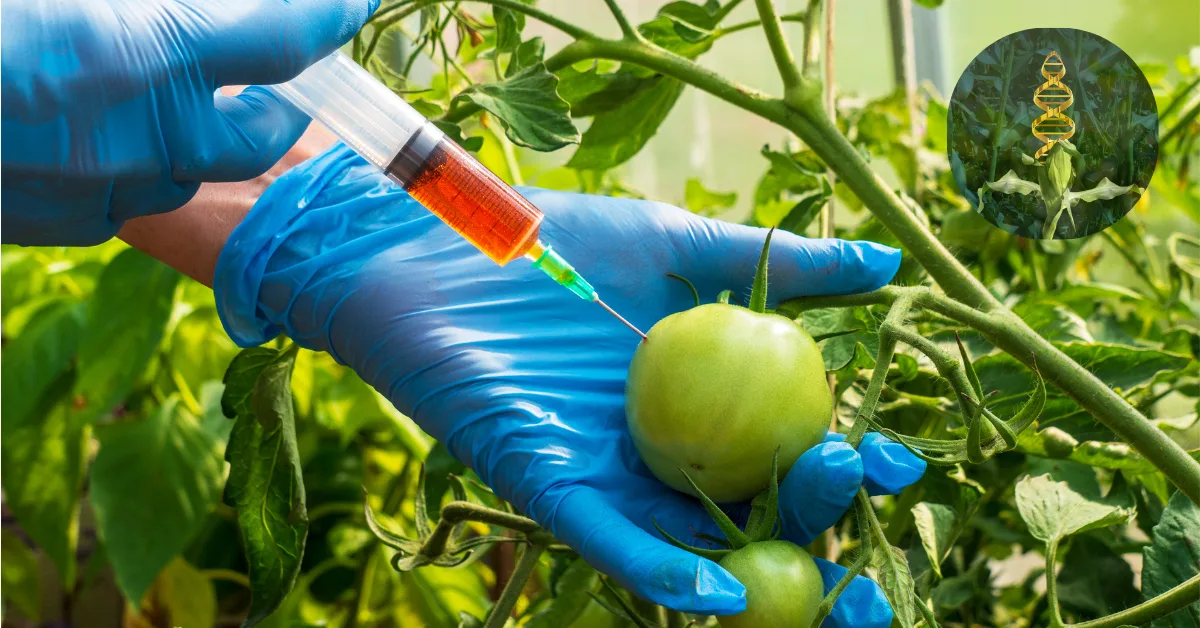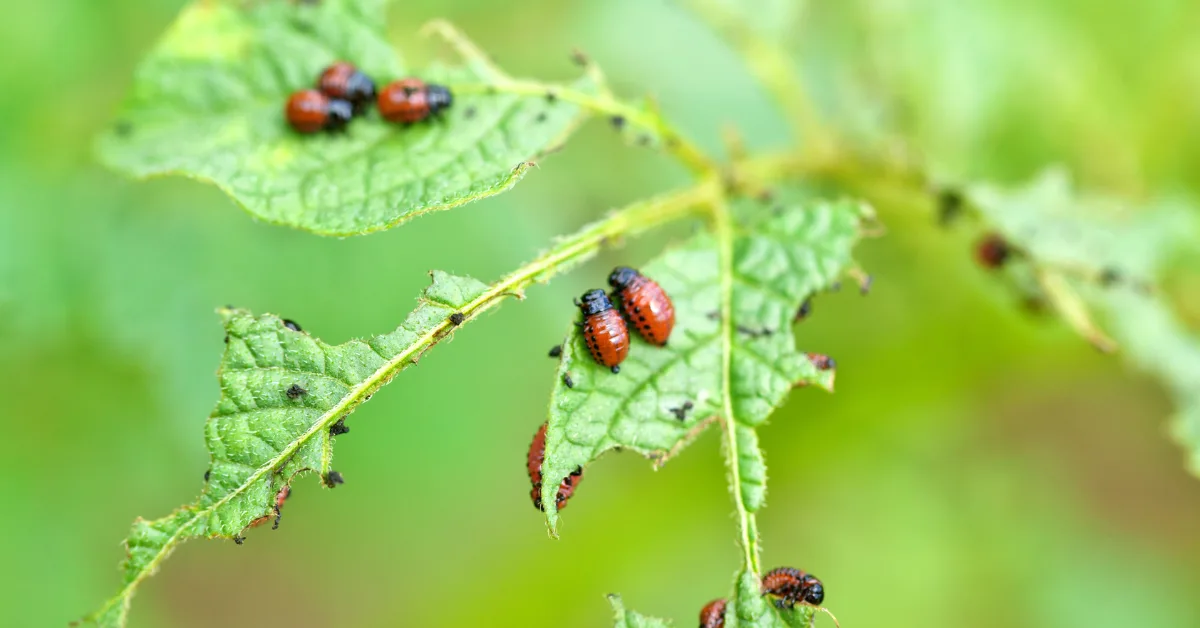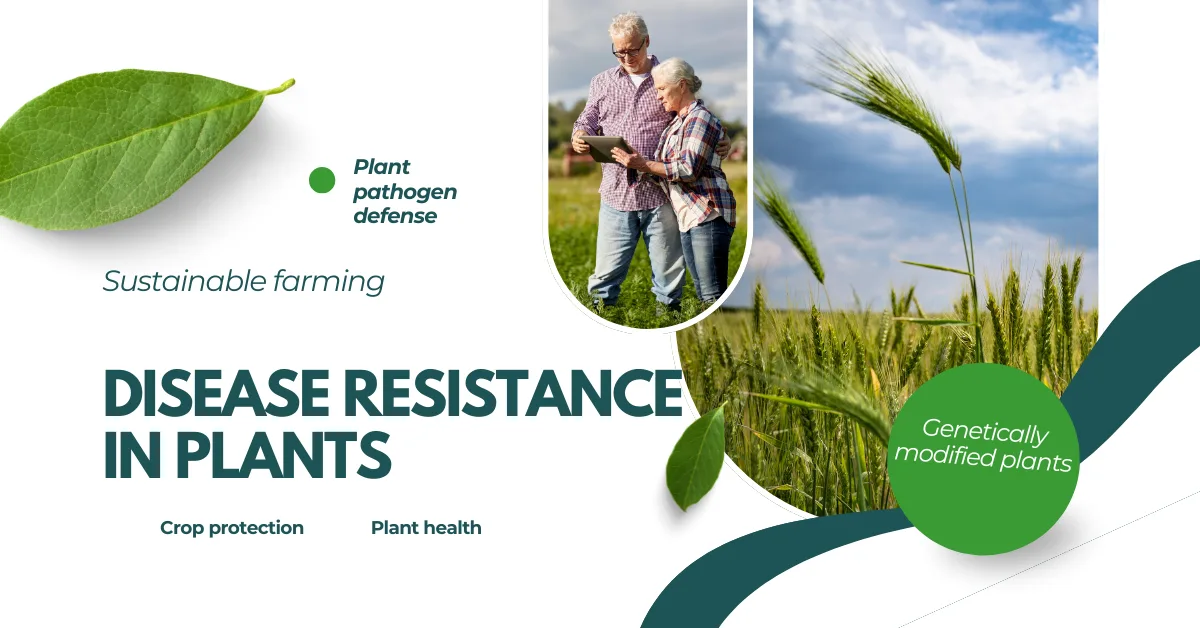Greetings
With annual agricultural losses of billions of dollars, plant diseases represent one of the biggest risks to the world’s food supplies. It is becoming more and more difficult to provide food security as the world’s population grows. Disease Resistance in Plants-In order to counter these dangers, plants must be resistant to disease. This blog post covers the science of plant disease resistance, its significance, its underlying mechanisms, and contemporary ways to enhance it. A healthy agricultural future depends on our ability to comprehend plant disease resistance, whether we are farmers, researchers, or just plant health enthusiasts.
Plant Disease Resistance: What Is It?-Disease Resistance in Plants
Disease resistance is a plant’s capacity to protect itself from illnesses brought on by pathogens like bacteria, fungus, viruses, and nematodes. In order to ensure the survival and productivity of the plant, resistant plants can either stop the pathogens from establishing or inhibit the disease process. Farmers and researchers work hard to develop crop varieties that are resistant to disease in order to increase yields and lessen dependency on pesticides.

Plants have two primary defense mechanisms against disease: acquired immunity and innate immunity.
Innate Immunity: The Initial Line of Protection-Disease Resistance in Plants
Innate immunity is a plant’s initial response to a pathogen invasion. Evolution has conserved this system in all plants to identify and combat a variety of diseases. Certain receptors, called pattern recognition receptors (PRRs), on the plant’s surface identify pathogens when they come into contact with them. Many pathogens share molecular patterns that these receptors can identify, including bacterial flagellin or fungal chitin.
Upon identifying the pathogen, the plant initiates a sequence of metabolic processes. These responses consist of:
The plant strengthens its cell walls to keep pathogens out.
The production of antimicrobial proteins halts the growth of pathogens.
Defense signaling pathways activate, alerting other plant sections to potential infection.
Acquired Immunity: Recollection of Previous Attacks
Acquired immunity is a more specific and durable defense mechanism. It takes place when the plant has come into contact with a particular pathogen and offers improved defense against infections that follow. The ability of a plant to “remember” the pathogen through a mechanism known as systemic acquired resistance (SAR) controls this kind of immunity. A pathogen attacks a plant, prompting it to produce signaling molecules like salicylic acid that trigger immunological responses in other parts of the plant, thereby preparing it for future attacks.
Because it allows plants to react to pathogens they have already encountered more quickly and efficiently, acquired immunity is essential for providing long-term protection.
The Function of Disease Resistance in Farming
Disease resistance in contemporary agriculture is important for a number of reasons
1. Less reliance on chemical pesticides.
- Despite their effectiveness in managing plant diseases, chemical pesticides frequently have negative consequences on the environment and human health. An over-reliance on pesticides can exacerbate the issue by causing bug populations to become resistant. Disease-resistant crops necessitate fewer chemical treatments, leading to a reduction in pesticide use and a decrease in environmental contamination.
2. Increasing the Yield of Crops
- Significant crop losses brought on by diseases can lower food supply and raise costs. Crops with disease resistance are healthier and more productive, which increases yields and stabilizes food supplies.
3. Maintaining sustainability.
- The importance of disease resistance increases when climate change changes growth conditions and increases the frequency of extreme weather occurrences. Disease-resistant plants are more resistant to environmental stressors, resulting in more resilient and sustainable farming systems.
4. Advancing Food Security
- With predictions of the world’s population approaching 10 billion by 2050, ensuring a sufficient supply of food becomes imperative. Because they minimize crop losses from diseases, disease-resistant crops are essential to preserving food security, particularly in areas with limited access to food.

Techniques for Plant Disease Resistance Development
Over time, researchers have developed many techniques to increase plant resistance to disease. These approaches range from state-of-the-art biotechnology methods to conventional breeding procedures.
1. Customary Breeding
- Crop development has been based on traditional breeding for thousands of years. It entails choosing plants that have desired characteristics, including resistance to disease, and then breeding them to create offspring that carry on these characteristics. For instance, researchers have bred numerous rice and wheat cultivars to withstand specific fungal infections.
- But there are drawbacks to conventional breeding techniques. In addition to being slow, the procedure could not always provide enough genetic variety to counteract viruses that are developing. Furthermore, breeders depend on the genetic diversity inherent in a plant species, which might not always be enough to combat novel and developing diseases.
2. A quicker route to resistance through genetic engineering
- By directly modifying a plant’s DNA, genetic engineering, also known as genetic modification, introduces particular genes that provide disease resistance. This technique, which incorporates resistance genes from other species, such as bacteria or fungi, can expedite the development of disease-resistant crops. The genetically engineered cotton known as Bt (Bacillus thuringiensis) is a well-known example of this; it produces proteins that are harmful to specific pests, hence lowering the need for chemical insecticides.
- The ability to produce targeted, specialized resistance to diseases brought on by specific pathogens, such as viruses or fungi, is one of the main benefits of genetic engineering. Genetically modified crops raise questions, though, about their safety, effects on the environment, and public opinion.
3. CRISPR-Cas9: A Game-Changer in Plant Disease Resistance
- CRISPR and Beyond Gene editing technologies like CRISPR-Cas9 are revolutionizing the introduction of disease resistance in plants. CRISPR makes it possible to add or remove particular genes from a plant’s DNA with accuracy. Results from this approach are quicker and more precise than those from conventional genetic engineering methods.
- By stacking many disease-resistant characteristics into a plant through gene editing, we can make it more resistant to a wider variety of diseases. As infections develop and become immune to single-gene resistances, this is especially crucial.
4. MAS, or marker-assisted selection
- Using molecular markers, marker-assisted selection is a contemporary breeding method that aids in identifying desired plant features like disease resistance. Without requiring genetic alteration, this method expedites the development of disease-resistant cultivars. We have effectively applied MAS to rice and wheat crops to increase resistance to diseases like wheat rust and rice blast.
Biological Management and Organic Remedies
Biological control is the process of managing plant diseases by utilizing helpful bacteria, fungi, or insects—natural adversaries of infections. Trichoderma spp. fungi, for example, can outcompete dangerous fungi and help shield plants from soil-borne illnesses. Certain microorganisms can also inhibit the growth of bacterial infections.
By promoting sustainable farming methods, these eco-friendly alternatives lessen the need for toxic pesticides. By using resistant cultivars, rotating crops, and maintaining healthy soil microbiomes, organic farming can also achieve disease resistance.
Plant Disease Resistance in the Future
Combining cutting-edge technologies with conventional agricultural methods will achieve plant disease resistance. Through the integration of genetic engineering, gene editing, and biological control, researchers can create crops that are more resilient to a variety of illnesses and more flexible in response to shifting environmental factors.

1. Long-Term Sustainable Solutions
- Creating disease-resistant crops that need fewer inputs and can flourish in harsh climatic circumstances is a growing area of research interest. This involves cultivating crops that can withstand drought and disease, guaranteeing food security in regions with limited water resources.
2. Taking climate change seriously.
- As climate change modifies weather patterns, causing temperatures to rise and precipitation to vary, we anticipate a rise in plant diseases. To help plants adjust to these new difficulties, disease-resistant crops will be essential. In spite of a changing environment, experts are making sure that crops can continue to thrive and produce food by concentrating on resilience.
3. Acceptance and Regulation by the Public
- Public acceptability of genetically modified and gene-edited crops is one of the main obstacles to their development. Informing consumers and regulatory agencies on the advantages and security of these technologies is crucial. We anticipate that the use of genetically modified crops will increase in tandem with increased research and open safety assessments, thereby promoting disease resistance in agriculture.
In conclusion,
With advantages including lower pesticide use, higher crop yields, and increased food security, disease resistance in plants is a key component of sustainable agriculture. We can guarantee that crops continue to be resilient in the face of changing environmental circumstances and developing pathogens by utilizing genetic engineering, gene editing, biological control, and traditional breeding.
Supporting research into plant disease resistance and investigating creative solutions are essential as we go forward to ensure a sustainable and healthy future. Supporting developments in disease resistance is essential to creating a more secure and productive agricultural landscape, regardless of whether you are a consumer interested in sustainable practices or a farmer hoping to improve crop health.
Urge to Take Action
Keep up with the latest developments in agriculture! To stay up to date on the newest developments in biotechnology, sustainable farming methods, and plant disease resistance, sign up for our newsletter. By working together, we can create a more resilient and healthy agricultural future.
FAQ:
What is resistance to plant diseases?
- Plant disease resistance protects against nematodes, bacteria, viruses, and fungi. Plants use infection-induced immune responses and pre-formed structures and chemicals to defend against pathogens.
How do plants combat illness?
- Plants fight disease via stronger cell walls, waxy coatings, and antibacterial compounds. Immunological reactions, including signaling molecules, alert other plant sections to defend against infections.
What types of disease resistance do plants exhibit?
- Two main disease resistance mechanisms exist in plants:
Plants’ first defense is innate immunity, which uses pattern recognition receptors to identify wide pathogens.
Acquired immunity: This involves a plant “remembering” the pathogen through systemic acquired resistance (SAR) to prevent future infections.
How can we create plants that are resistant to illness?
- Conventional breeding, genetic engineering, and gene editing can create disease-resistant plants. Traditional breeding selects plants with inherent resistance. Genetic engineering brings specific resistance genes from other organisms, whereas genome editing methods like CRISPR precisely alter plant genomes for resistance.
What is the significance of plant disease resistance in agriculture?
- Agriculture relies on plant disease resistance to boost crop production, reduce pesticide use, and protect the environment. Disease-resistant plants help maintain food output and global food security by reducing crop mortality.



